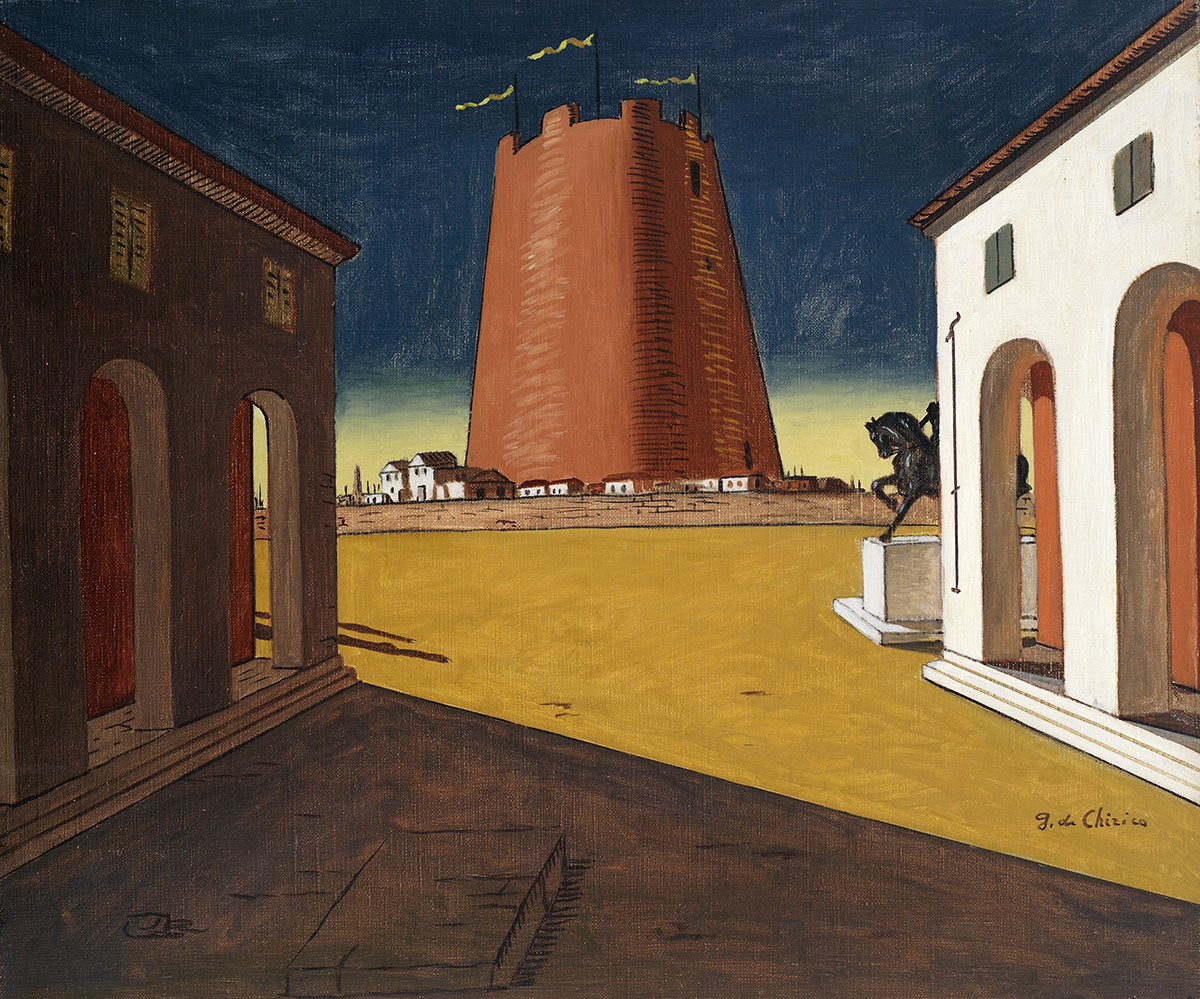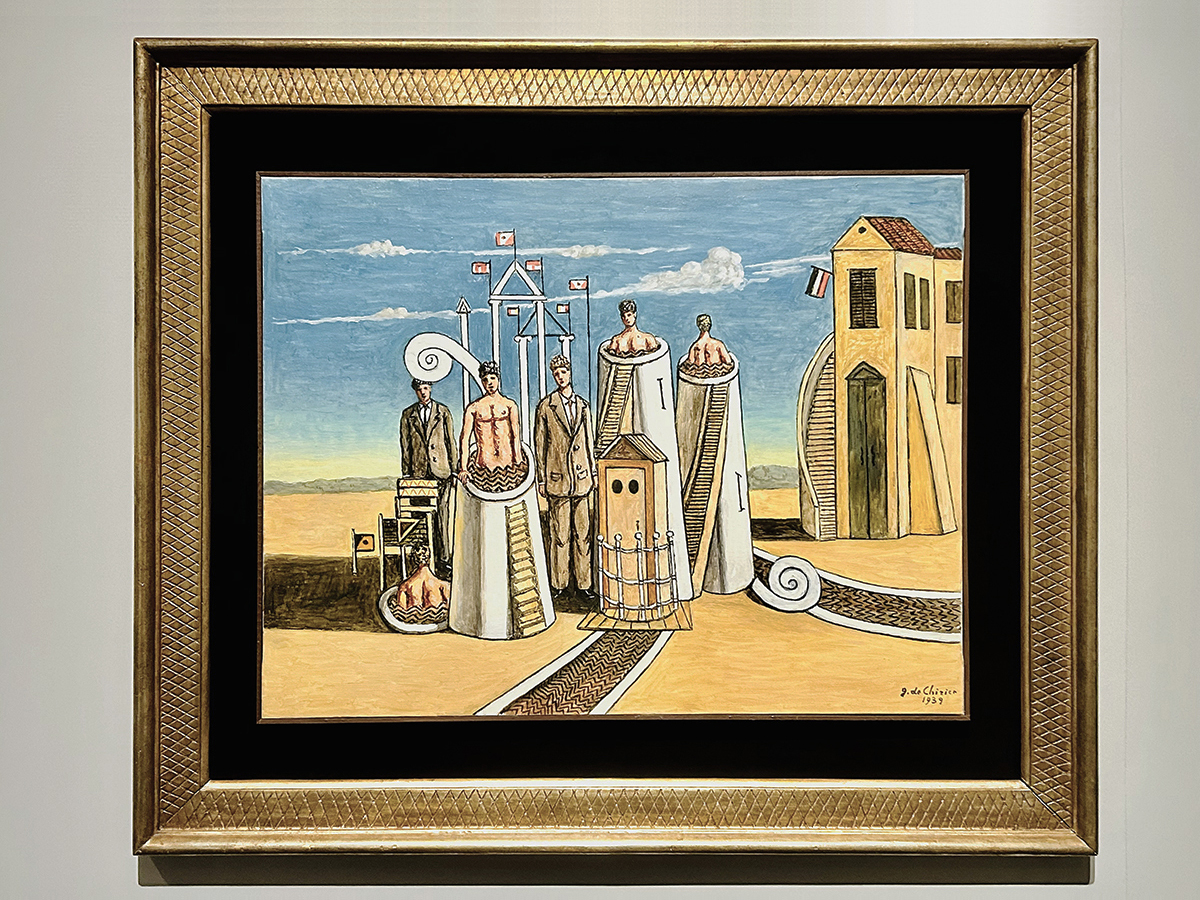GIORGIO DE CHIRICO: METAPHYSICAL JOURNEY
HAPPENINGText: Alma Reyes
In 1910, de Chirico found himself amidst the Gothic and Renaissance Piazza Santa Croce in Florence. He remarked, “…The autumn sun, warm and unloving, lit the statue and the church facade. Then, I had the strange impression I was looking at these things for the first time, and the composition of my picture came to my mind’s eye.” (Italian Squares, Metaphysical Paintings section, “Giorgio de Chirico: Metaphysical Journey,” Tokyo Metropolitan Art Museum) That special moment ignited his urge to illustrate plazas and interiors with a notion of subtle imbalance and disharmonized angles.

Giorgio de Chirico, Italian Square with Rose-Colored Tower, c. 1934, Mart, Museo di arte moderna e contemporanea di Trento e Rovereto, deposito Collezione L.F. © Archivio Fotografico e Mediateca Mart © Giorgio de Chirico, by SIAE 2024
The effect is illusory, and though disturbing to some viewers, elicit mystery, paradox and melancholy beneath the surface of our daily lives. Italian Square with Rose-Colored Tower (c. 1934) in new color tones and light brushwork, and Italian Square (Monument to the Poet, 1969) exemplify such tendencies where, especially in the latter work, certain elements in the picture emerge unallied with the scenery. The Great Tower (1915?), done in several versions, is one of the artist’s iconic pieces, depicting the beautiful Mole Antonelliana in Turin. The structure’s composition is almost abstract and indicates de Chirico’s common use of chimneys and towers in many of his pictures of squares.

Giorgio de Chirico, Metaphysical Interior with Ball and Biscuits, 1971, Fondazione Giorgio e Isa de Chirico, Roma © Fondazione Giorgio e Isa de Chirico, Roma © Giorgio de Chirico, by SIAE 2024
After World War I, de Chirico moved to Ferrara, Italy. Here, he took notice of minute objects like spools of thread or sweets that filtered through the city, and incorporated them haphazardly and intricately into paintings of rooms. The restrictions of producing art during wartime may have affected the minimal size and claustrophobic feel of his works. In Metaphysical Interior with Ball and Biscuits (1971), the framework evidently appears cluttered with tinges of Ferrara biscuits mounted on panels.

Giorgio de Chirico, Mysterious Baths, c.1965, Fondazione Giorgio e Isa de Chirico, Roma © Fondazione Giorgio e Isa de Chirico, Roma © Giorgio de Chirico, by SIAE 2024, Photo: Alma Reyes
The section on Mysterious Baths is an intriguing array of lithographs produced for the book Mythologie (1934) by Jean Cocteau. The illustrations reminisce the artist’s youthful days by the seaside in his homeland Greece. During that time, de Chirico was struck by the defined contrast between clothed and unclothed bathers viewed from windows of changing booths, which seem to represent masked human heads. He discovered a subconscious link between his quite chaotic childhood memories and the parquet floor in a house he had visited before, symbolized by the water motion’s zigzag pattern.
Read more ...





